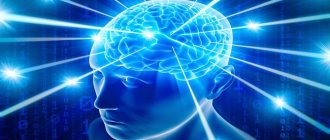What it is?
If we rely on a specific definition, the term logical thinking comes from the words “logic” and “thinking.” In philosophy, logic is defined as a science that cognizes the laws of intellectual cognitive activity and has its premises in antiquity. She studies methods by which the truth can be discovered. Thinking is a mental process that allows you to process previously received information.
Thanks to correct and objective thinking, any of us has an idea about the world around us and the laws of nature.
If we combine logic and thinking, we get a certain process where logical constructs are used. When such a process is put into action, a person receives accurate objective knowledge and draws certain conclusions, including formal ones. In addition, logic is also involved in the creation of abstract concepts. When concepts are combined, then the information received is systematized. This process is unique to humans. Initially, a person receives abstract information and then connects it with each other. This is how logic, consisting of factors such as analysis and synthesis, is included in this process. To be more precise, analysis is the breakdown of information into separate parts. Through the process, our brain can determine the essence of information.
When synthesis is connected to analysis, the analyzed information parts are combined. This is exactly how logical thinking works in our minds. You need to understand: whoever knows how to think logically is able to carry out effective mental activity. Logical thinking is a special form of human intellectual activity. Let us consider the main stages that underlie the scientific, everyday, mythological and artistic knowledge of man.
What is it for
We constantly think, the brain does not stop activity for a second. A person processes tons of information every second, and in order to objectively assess what is happening, make the right decisions and make fewer mistakes, one must rely on logic. At first it will require effort, but then the brain will make the right decisions automatically because it will train.
These are not just single conclusions, but a chain of personal behavior, a way of life, part of individuality. The future depends on every decision, even if it seems insignificant. Having mastered the skill of thinking logically, a person is able to:
- choose a rational way to solve a life situation and find a way out;
- choose a quick and effective method to achieve your goals;
- calculate your competitors’ moves in advance, stay ahead and bypass them, anticipating every action;
- be able to conduct discussions, small talk, scientific debates and simply maintain a conversation;
- speak competently, concisely and understandably for everyone;
- draw conclusions based on your mistakes and become better every day, thanks to competent introspection and reflection;
- approach other people and yourself critically, soberly assess what is happening;
- master the art of oratory, influence other people by making compelling arguments;
- avoid outside manipulation, do not become a victim of deception and scams;
- be able to competently answer questions, twist the line of conversation in your favor, and not fall for the interlocutor’s tricks;
- do not succumb to self-deception and the Barnum effect - subjective confirmation based on a high assessment of the accuracy of the characteristics of your personality from generalized conclusions (horoscopes, tests, socionics).
Peculiarities
In psychology, it is believed that thinking is cognition, which is at the very top. This concept is based on education (obtaining various information), replenishing the stock of knowledge, inferences, as well as an idea of the world around us.
Man is a creature that can speak. This means that his thinking has a direct connection with speech . Therefore, all people can receive the established standard development only as a result of joint communication.
To solve various issues, two types of thinking are used: verbal-logical and visual. When a full-fledged thought process takes place in the human brain, then the representation of objects and the manipulation of words occurs. So, let’s decide on the formulation - what is verbal-logical thinking. By the way, it is also called verbal-logical thinking (abstract thinking) and involves the use of speech structures. This type works and is based on language means. Also, this type is the most recent stage in the antagonistic and historical development of thinking.
The structure of the thinking under consideration consists of various types of generalizations. Therefore, it is located within the internal mental plane and functions on the basis of linguistic means. As a result, it is considered that this is the highest stage of development of thinking.
When this type of thinking is activated, any individual can identify general patterns and generalize information.
People are not born with this kind of thinking right away. It develops as a person grows older. When learning begins, gradual mastery of mental activity occurs. At this moment, the ability to think and reason in the mind, as well as solve various mathematical problems, arises.
Then the following operations are formed:
- the process that allows a person to move from several parts to a whole is called synthesis;
- when, during mental activity, a certain decomposition of a complex object into parts occurs, and these parts are considered separately, then such a process is called analysis.
By the way, the above operations, namely synthesis and analysis, are some kind of allies, since they cannot work without each other. Besides them, there are some other processes.
- The comparison of objects, various information or various phenomena is called comparison. In addition, this process can reveal commonalities and differences between the above points.
- When many phenomena or objects are united according to one common characteristic, such a process is called generalization.
- The decomposition of objects into certain groups according to characteristics, similarities, etc. is called classification.
Based on this information, the conclusion suggests itself that it is imperative to develop abstract thinking at a younger or school age.
Any knowledge cannot be acquired without verbal thinking. And here’s why: if you don’t develop thinking, then any individual, be it an adult or a child, will not be able to learn to compare various phenomena, objects, situations with each other, and also to conduct a thorough information analysis in the mind.
Even communication with other people will become quite a difficult task for him.
The main stages and patterns of speech development in preschool children
It is a mistake to think that it is worth developing speech when the child grows up or already speaks. From the first days of his life, he “absorbs” all the data about the world around him that he can receive.
Baby by four months
begins to “coo,” “hum,” and make onomatopoeic sounds, and at six months he begins to correctly distinguish intonations and recognize familiar voices.
When the child turns one year old,
he begins to understand individual words and associate them with certain objects and people. Able to understand a simple request in the spirit: “Look at mom.”
At two to three years old
the child masters almost all sounds; hissing, whistling and sonorant sounds can still present difficulties, and masters a vocabulary of 200-700 words. When asked, he says his name, the names of his relatives, and when faced with unfamiliar objects or phenomena, he asks questions about their name.
At the age of four to five years
speech becomes noticeably more complicated, the child uses compound and complex phrases, does not miss sounds, and pronounces simple words without hesitation. At this time, logical thinking is formed. The child actively discusses why this object is named this way and not otherwise: blueberries - because they are black, etc.
Senior preschool age (5-7 years)
characterized by the formation of clear monologue speech and dialogue. Retelling short stories in your own interpretation or discussing the rules of the game. The child can compose detailed stories based on pictures and compose his own stories.
You need to not only observe the development of a child, but also actively participate in it. At preschool age, children's consciousness is especially flexible. And almost all children are capable of learning. Each of them masters artistic speech at his own pace and begins to use it meaningfully.
Our children are very talented; each one has abilities and talents. Push their curiosity. With simple exercises, train their ability to think and express their thoughts in words. Don't waste your time. It will definitely pay off. Your child will be ready for school and will study without unnecessary hassle. And you won't have to be upset about his performance and grades.
Functions
In psychology, it is generally accepted that mental activity always builds a connection between events or phenomena. A person must analyze information and make conclusions. The tool for these actions is logical thinking. This means that in this case such an ability as cognition moves to a new level. The above process also has a regulatory and communicative purpose. This technique is useful when building communication between people and when conducting joint activities. Logic also allows you to put forward various versions and draw certain conclusions with their help.
So, a person defines his thoughts with the help of words. They can be expressed orally or in writing. It should be noted here that a person acquires these skills in childhood, when he has contacts with adults. Then thinking is developed, which can have the following varieties:
- visual-figurative;
- effective;
- verbal-logical;
- abstract-logical.
Visual-figurative and visual-effective thinking are always associated with the perception of objects when a person interacts with them. But verbal-logical thinking is already based on certain concepts. This is how the knowledge of patterns and relationships in the surrounding reality occurs.
Ultimately, thinking reaches a certain level, then complete ordering of practical actions occurs.
If we talk about abstract logical thinking, then it should be noted that it is also abstract. This type is based on the detection of significant properties, connections, as well as their separation. In this case, properties and connections are divided into essential and less essential.
When cognitive activity begins, the thought process acquires the following functions:
- the role of concepts is classified;
- problems related to life are solved.
- the management of an individual’s activities is facilitated by understanding reality; this process also helps to plan behavior, set goals, and so on;
- both the activity itself and its result are analyzed, and reflection is included in this process.
In addition, the functions of logic are as follows:
- methods of thinking are catalogued, and thinking itself arrives at the truth;
- to study ways of implementing thought processes, the development of theories is included in the overall process;
- the created theories undergo formalization and take the form of symbols or signs.
Important! Logic and thinking have exactly the same functions. For example, logic is always a correct thought process. When a person thinks logically, he uses various techniques to find ways to achieve excellent mental results that lead him to the truth.
Verbal-logical thinking is conceptual in nature. The prerequisites for the development of logical thinking, the assimilation of actions with words, numbers, as with signs, replacing real objects and situations, arise at the end of early childhood, with the formation of the sign function of consciousness. At this stage, the child begins to understand that an object can be designated, replaced with another object, a drawing, a word. However, she may not use the word to solve independent mental tasks for a long time.
. Verbal-logical thinking is thinking that is embodied in concepts, logical constructions using linguistic means.
Visual-effective and visual-figurative thinking are closely related to speech, with the help of which adults guide the child’s actions, introduce her to practical and cognitive tasks, and explain how to solve them. The child’s linguistic utterances, when they still accompany a practical action, do not get ahead, contribute to her awareness of the process and result of this action, and help in finding ways to solve problems. The role of speech increases with the acquisition of planning function, when the child seems to think out loud. However, even at this stage, in her mental actions she uses not words, but images, and plays an auxiliary role.
In mental development, logical thinking is the next stage after figurative thinking, on the basis of which it ensures the solution of more problems and the assimilation of scientific concepts. However, this does not mean the need for premature formation of logical thinking, since without developed figurative forms of assimilation it will be incomplete. The development of figurative thinking helps the child logically understand the generalized schematic images on which the formation of understanding is built.
After mastering logical thinking, figurative thinking does not lose its significance, since in activities related to the need for consistent, logical thinking, the use of images plays an important role. Different ways of thinking are the source of creativity and the functioning of intuition, without which scientific discoveries cannot occur. It best suits the living conditions and activities of a preschooler, the tasks that he has to solve in play, drawing, design, and communication. Therefore, preschool age is the most sensitive to learning, which is based on images. It is advisable to activate a child’s logical thinking only when necessary to familiarize her with the basics of scientific concepts (mathematics, science, language, etc.). There is no need to subordinate the child’s thinking only to logic.
With the help of special training, a child can learn methods of solving problems that are unusual for his age, but this is not related to the formation of age-related neoplasms, a new level of development of thinking, or an understanding of the essence of this method.
Preschoolers most often demonstrate logical thinking in clarifying connections between objects and phenomena. First, they establish functional connections (purpose, use of objects), complex e - to establish connections between space and time in a logical (semantic) meaning, which is caused by their secrecy (they do not appear on the surface of the phenomenon, although they are accessible to sensory practical experience).
Early forms of verbal thinking in children are characterized by the replacement of unfamiliar conditions in a task and its solution (images, concepts, requirements) with more familiar ones (“a sense of familiarity”), clarification of simple connections in (if necessary, analogies, functionality, etc.) not only between essential aspects and characteristics of various objects, but also between random external, secondary ones. On this basis, some psychologists (V. Shtern) argued that the child strives to connect everything, which indicates that logical reasoning is uninformed; in fact, this only applies to unfamiliar and complex content that small children have to operate with.
The originality of the thought process, as a result of which a small child makes conclusions that are unexpected for adults, is due to her lack of knowledge necessary to establish significant connections between the conditions (parties) of the phenomenon; inability to think consistently and use a logically justified system of mental actions. For logical reasoning, comparisons, generalizations, and drawing conclusions, the child needs. Volodya, not only for each individual operation, but also for the general methods of mental activity.
Mandatory links in the thinking process are: synthesis and primary (perception of the task as a whole) analysis
(dividing a task into parts, highlighting its conditions and data);
synthesis 11
-
secondary
(solutions, new understanding of the problem). The thought process of a young child proceeds from synthesis to synthesis II. Analysis, an essential part of thinking in preschoolers, is the identification of one, often random, feature of an object or condition.
A child of primary preschool age, moving away from a bright object, easily makes the connections he is looking for. However, they often do not correspond to reality, which gives rise to illogicality in children's judgments. The special teaching of children - to search for and establish the essential characteristics of objects and phenomena, to find significant dependencies between them - quickly develops their logical forms of thinking. To understand the development of verbal thinking in children, analysis of their nutrition is essential.
A characteristic feature of preschool age, as is known, is curiosity, which shapes a person’s mental development. In its development, a child overcomes certain stages in accordance with the age characteristics of the human psyche. Icky. Curiosity is a personality quality that has high cognitive needs at all stages of life and in various types of activities, and is aimed at searching for the unknown, unknown, and incomprehensible. She is ist. The essence of human activity, the desire to deeply and comprehensively understand reality.
Curiosity contributes to the emergence and functioning of cognitive interest, is the cause of its emergence and the form of its existence. Realized in interest, curiosity would preserve it, prevent it from extinguishing, and constantly stimulate the mechanism of cognition. The curiosity of an adult is always selective, but that of a preschool child can be directed to a significant number of objects, often opposite in content and function (L. Prokolienkoko).
Curiosity is not only a personality quality, but also a mental action, a way of knowing, a stimulus and a way of measuring. The hidden sides and properties of reality cannot be felt, but can be perceived directly; a person comprehends with the help of thinking. Therefore, nurturing a child’s thinking is one of the main conditions for the formation of curiosity. After all, a child strives to understand the cause-and-effect relationships in nature, relationships between people and, if he has the need to know them, the opportunity to understand them.
An expression of a child’s natural cognitive needs are questions, the number and variety of which increases sharply after 3 years. The child’s questions indicate that she is interested in something unknown, is searching and trying to understand it.
The child’s first questions are not yet cognitively oriented. Having asked an adult: “What is this machine for?”, and having received an answer, they can repeat this question several times. Children's first questions are a form of active communication between the child and adults *. They become cognitive later, arising on the basis of acquired knowledge, the desire to penetrate deeper into the known or hidden aspects of a phenomenon and establish connections in its depth. According to the stories of adults, their answers to their questions, the child begins to understand that beyond what he sees and knows, there are certain circumstances that cause visible facts. With your questions “why?”, “Why?”, “How?”, “For what?” these circumstances, to see and understand what they do not see. Adults' answers every time convince them of the existence of these connections. Trying to find out about the unknown, a preschooler asks an adult: “Why do you care about trees?”, “Why and where does the wind blow from?”, “Where does the water flow in the river?” stars of the wind?”, “Where does the water flow in the river? Why shouldn’t you stand on the spot?” too bad.
Such questions are extremely messy and varied. By the age of 5-6 years, the child does not even try to generalize or connect the acquired knowledge. When dealing with the strange, the incomprehensible, the new, she asks about what interests her. Despite the variety and disorder, children's questions have a clearly expressed cognitive nature and differ significantly from the questions of young children. 5-7 year old children wait for answers, express their doubts, and deny. Older preschoolers compare adults' answers with what they know, compare, doubt and question.
The child poses a question and then, when she wants to be convinced of the correctness of her conclusion, turns to an adult so that he recognizes her competence. With age, the number of such questions increases, they become the main ones. The formation of a qualitatively new way of thinking in a child is associated with the development of mental operations, which begin to be used in preschool age as methods of mental activity. The basis of everything. The most important operations of thought are analysis and synthesis. A preschooler compares objects according to a greater number of characteristics than in early childhood, notices even minor similarities or differences between the external characteristics of an object, and responds to them.
In preschool childhood, the nature of generalizations changes. Children resort to simple experiments and experiment: throwing objects into a bathtub of water to see if they will float; Place a glass bowl of water in the freezer to get ice. Such experiments lead them to conclusions, generalized ideas. Gradually they move from operating with external features to revealing features that are more significant for the subject. A new level of generalization helps them master the classification operation
— enrollment of an object into a group based on prenatal characteristics. The development of the ability to classify objects is associated with the development of generalizing words, the expansion of ideas and knowledge about the world, and the ability to identify essential features in an object. The closer the objects are to the preschooler’s personal experience, the more accurate the generalizations he makes. The child first distinguishes groups of objects with which he actively interacts (toys, furniture, dishes, clothes), then adjacent classification groups (wild and domestic animals, tea and tableware, etc.).
The development of mental operations ensures the formation of deductive thinking
- the ability to coordinate your judgments and make contradictions in them. At first, the child, even when operating with general provisions, cannot justify them properly or expresses random justifications, gradually acquiring the ability to draw correct conclusions.
So, in communication with adults, in games and activities of the child, the types of his thinking develop, a culture of mental work is formed, which will ensure productive intellectual activity in adulthood.
Forms of thinking
Thinking has three forms: concept, judgment and inference.
- The concept reflects a group of homogeneous objects through the fixation of their common essential characteristics.
- A judgment can be in the form of a statement, doubt, criticism, statement, etc. But its essence lies in establishing a connection between concepts, during which an opinion is formed.
- Inference involves mental work with judgments and concepts, their processing, and then making a new judgment. We often use two common types of reasoning: deductive and inductive.
Types of thinking
The development of thinking in a child depends on age characteristics. This means that as a fidget grows up, the mental processes occurring in his brain become more complex. Thinking happens:
- Visual and effective is typical for children under 2 years of age. They strive to obtain the desired result;
- Visual and figurative is typical for preschoolers under 7 years old. The process of perception becomes more complicated, anticipation of the result appears;
- Verbal-logical appears at 6-6.5 years in the form of rudiments that require development. Preschoolers are able to find the answer to solving a complex problem in the form of transforming an object (well-known tasks for rearranging one stick so that the result is something different from the original object), determine the sequence of interaction of objects (for example, when solving a logic problem about a goat, a wolf and cabbage , which must be transported on one boat from one shore to another under certain conditions).
What types of logical thinking exist
In psychology, there are several types of the named skill (or, rather, groups of skills and approaches). Based on the main way of perceiving and reproducing information.
Abstract logical thinking
This is the basis of the named concept. When they talk about logic, they mean precisely this part of the activity. Its foundation lies in the ability to non-verbally, with great speed and efficiency, build complex connections, find relationships, notice subtle facts, and classify them. Also, a person with a high culture of this kind is able to quickly sift out the “husks”, find implicit connections, and come to non-trivial conclusions. Independently putting forward complex hypotheses and formulating one’s own theories are also important skills within the framework of this method of mental activity.
An important quality that should not be forgotten is consistency. That is, individual aspects, conclusions, must be consistent with each other and with the general outline of the reasoning. Otherwise, this is “pseudology” and is of little use. Possible flaws in your own reasoning also need to be noticed and corrected in a timely manner. Mistakes are possible even with developed skills.
The difference between the degrees of development lies in the ability to find and eliminate them. The abstract variety requires a long development and forms the basis for all other types. With sufficient mastery, problems no longer arise.
Verbal and logical thinking
A subtype based on verbal abilities. That is, the ability to put your thought into speech and convey it to the audience. Including in writing. Skill plays a huge role in the work of speakers, writers and publicists, writers. It is impossible to do without the ability to consistently formulate thoughts for scientists and workers in the educational environment.
There is also an important pairing skill. Be able to evaluate the speech of another, notice all inaccuracies and contradictions. The same goes for text. The ability to analyze other people's thoughts is indispensable when writing reviews or working as a public speaker (for example, a lawyer). Paradoxically, a well-developed abstract form of logical thinking does not mean that a person will automatically be quite effective in verbal form.
To become competent in this area, you must have a wide vocabulary and literate speech skills. The ability to accurately convey thoughts is born with experience and develops with it. Therefore, everything can be improved with the proper number of hours of practice. Another name for this group of skills is verbal-logical thinking. Specific examples where an understanding of this approach is required are speeches in court. The lawyer is a reference example. On the one hand, he must be able to prepare his own speech and defend his position if the other party or the court has questions. On the other hand, to detect inaccuracies in the opponent’s speech, to catch him using ambiguous wording and so on. Such a person must have an extensive arsenal of skills: from on-site system analysis to competent argumentation, the ability to debate, and quickly navigate the situation.
Visual-logical thinking
Required for situational analysis. It plays a major role in the work of criminologists, forensic experts, and doctors of various specialties. Workers of such profiles deal mainly with visual, visual material: be it the scene of investigative actions, radiography (image), a picture on the screen of an ultrasound machine, or something else in the same spirit. The specialist’s task is to track important visual data and interpret it correctly, integrate it into the overall picture and create a consistent concept. In the case of doctors, it may look like this. A radiology specialist takes a picture, deciphers it and gives general information about the condition of the lungs (optional). He does not make diagnoses. Its contribution is to assess the characteristics of the organ and search for anomalies. This requires developed logical thinking. The therapist or pulmonologist, based on X-ray data and other objective studies, already draws conclusions on the diagnosis. Which requires systematization and in-depth analysis skills.
It is not always necessary for all three varieties to be developed to an equal, high degree. It all depends on the person himself, his desires, professional activities, and experience. It's all about skills and willingness to practice. In any case, you cannot do without logical thinking. It lies at the basis of knowledge. Moreover, one cannot achieve success in academic and scientific activities if one does not master such a rich toolkit.
Analogies
Tasks on finding semantic connections are difficult to complete for children with poorly developed logical thinking and a small vocabulary. At the same time, performing such exercises will help enrich the child’s vocabulary and develop logic.
How to do it? We need to identify the relationship between the first two words. Then find a similar connection in the second pair.
For example: Friday/Sunday, Tuesday/(Wednesday, Thursday, Saturday, Sunday)
Let's look at: "Friday - Sunday" what is the connection? These are the days of the week, going every other day. In the second pair, “Thursday” is suitable for the word “Tuesday”. He also comes the day after Tuesday.
Run / stand Scream / (Yell, yell, student, call, be silent)
Theater/ spectator Library/ (Listener, books, shelves, reader)
Iron / blacksmith Wood / (Table, cabinet, carpenter, board, plane)
Spruce / table Oak / (Wood, boards, cabinet, saw, sander)
Steamship/ pier Train/ (Conductor, rails, compartment, station, carriage)
Machine / motor Yacht / (Sea, sail, captain, deck, helmsman)
Eyes/ glasses Leg/ (Walking, shoes, crutch, bandage, socks)
Steam locomotive/ Horse carriages/ (Hoofs, cart, races, road)
Needle/point Razor/ (Barber, blade, beard, mustache, face)
Music/ orchestra Singing/ (Song, choir, music school, singer)
Cows/ herd Wolves/ (Attack, hunting, pack, grey, leader)
Rye/ field Apple tree/ (Apples, harvest, garden, gardener, juice)
Mountain / cave Tree / (Garden, hollow, forest, branches, trunk)
House/ floors Stairs/ (House, railings, steps, walk, rise)
Number/ numbers Word/ (Sheets, book, notebook, letters, reading)
Disease/ treatment Breakdown/ (Car, motor, repair, mechanic, car wash)
Cool/frost Blue/ (Blue, sky, purple, red)
Enemy/enemy Market/ (Buyer, bazaar, counters, sellers)
Raspberry/ berry Mathematics/ (Textbook, scientist, science, student, school)
Plant/ seed Duck/ (Bird, pond, ducklings, quacks, egg)
Year/ spring Life/ (Man, youth, long, cheerful)
Chapter/ book Apartment/ (New, balcony, three-room apartment, house)
Hunger/ lean Labor/ (Hard, tired, in the field, in the factory)
Film / Opera screen / (Curtain, theater, stage, artists, orchestra)
Monday/Tuesday Sunday/(Week, Monday, calendar, Saturday, day after tomorrow)
Tuesday/ Thursday Sunday/ (Wednesday, Tuesday, Friday, evening)
Morning/night Winter/ (Spring, autumn, year, summer, week)
Ball / circle Cube / (Figure, square, brick, constructor)
Goat / animal Bread / (stove, food, mold, dough, roll)
Voice/ echo Face/ (Reflection, mirror, clean, beautiful)
Where is it used?
Children, with the help of abstract thinking, draw, design, sculpt, understand the meaning of riddles, can solve problems, and coherently express their thoughts when describing events. During school years, this type of mental activity helps schoolchildren master mathematics, which requires the ability to operate with a lot of data, divide them into groups, and look for relationships.
Abstract thinking is used in logic, physics, astronomy and other exact sciences, where one must be able to measure, count, calculate, and combine elements into one group. It is necessary for psychologists, philosophers, writers, engineers. Time management is unthinkable without it.
In everyday life, people also constantly use abstract-logical mental activity. Examples of abstract thinking reflect everyday human thought processes. Planning often intersects in the imagination with dreams and fantasies. Young people looking for a job can come up with so many things that, when faced with reality, they cannot stand the conditions offered to them. So girls, waiting for a prince on a white horse, mentally endow their future chosen one with unrealistic traits. This inevitably leads to disappointment in the future.
The importance of developing verbal logical thinking in children
It is necessary to develop verbal logical thinking in preschoolers because children will soon begin studying. From the first days they will study subjects based on logic , and unprepared children will have a very difficult time.
Undeveloped verbal logical thinking interferes with the assimilation of knowledge, leads to the inability to express one’s thoughts, and prevents the establishment of normal contacts with teachers and other children. This is why adaptation in our society is so difficult for the deaf and mute. They go to special schools, they are taught using special methods, they even have their own language.
To help your child, you can:
- ask him to retell cartoons;
- compose fairy tales with him;
- solve simple logic problems with him;
- solve riddles;
- ask him to explain the meaning of proverbs and sayings.
Games with images
Children for the most part are visual, so they like games with pictures and images. Activities using cards, paper and pen stimulate the development of figurative and logical thinking.
Here are some ideas for this type of activity:
- offer games for comparing and grouping objects by color, shape, size and other characteristics;
- solve puzzles;
- make up stories based on pictures;
- Teach your child how to use a spirograph;
- solve logical problems;
- solve puzzles;
- play games on paper;
- go through labyrinths;
- solve droodles;
- solve riddles.
4+
7+
9+
We learn to solve puzzles and rebuses.
How to take classes?
The lessons themselves with all the exercises can be completed in 1-3 weeks, having mastered the theoretical material and practiced a little. But to develop logical thinking, it is important to study systematically, read a lot and constantly train.
For maximum effect, we recommend that you first simply read all the material, spending 1-2 evenings on it. Then take 1 lesson daily, doing the necessary exercises and following the suggested recommendations. After you have mastered all the lessons, engage in effective repetition using this technique to remember the material for a long time. Next, try to apply logical thinking techniques more often in life, when writing articles, letters, when communicating, in disputes, in business, and even in your leisure time. Reinforce your knowledge by reading books and textbooks, as well as using additional material, which will be discussed below.
Working with patterns
The pattern can be hidden in drawings, between numbers, letters, or any elements of a series.
To learn how to correctly find a pattern, we follow the following algorithm:
- We look carefully at a number of numbers, figures, animals, objects.
- Let's try to guess what the pattern is based on - what rule the elements are arranged according to.
- We are trying to determine the type of pattern.
- We test our assumptions one by one to see which rule holds.
- Having made sure that the “intended” rule is observed, we will be able to accurately name the next elements of the series.
Examples of patterns with numbers:
2, 5, 8, 11, 13, …
3, 4, 7, 8, 11, 12, …
99, 10, 88, 20, 77, …
4, 16, 5, 25, 6, …
Coloring books with logical patterns are perfect for children aged 5-9 years.
Exercises to develop logical thinking
There are many ways to develop logical thinking in activities.
For example, psychologists advise reading more. It doesn’t matter whether it’s fiction or scientific literature, the main thing is to comprehend what you read, write down your thoughts and conclusions, argue with the author, catch him in contradictions. Board and computer games based on logic, for example, chess, checkers, sea battle and others, help well in the development of logic.
You can also use specially designed exercises for this purpose.
Exercise "Logical chains"
This is one of the most common training tasks for the development of logic. It has many forms, types, modifications for different ages. His goal is to learn to establish logical connections between things, phenomena, and concepts.
Option 1
Example: two objects are given - a fish and a bottle. Find what can connect them. Possible answers include the following:
- both objects have a similar streamlined shape;
- both the fish and the bottle are associated with water;
- if the bottle is plastic, then it, like a fish, can swim;
- the fish and the bottle may have the same color;
- both objects contain substances useful to humans, etc.
You can continue the list further or choose new objects, making sure that at first glance they are completely different and have nothing in common (a cat and a chair, ice cream and a car, etc.).
Option 2
Two events occur, separated by a relatively short period of time:
- A pencil falls from the desk of the head of the company to the floor.
- A fire breaks out in a room at one of the southern resorts.
Establish a logical connection between the first and second events. See how many intermediate events are in your logical chain. Try to build another one, where there are more or less events.
If the exercise is carried out in a group, then it will be interesting to compare and analyze the logical chains of all participants and choose the most interesting one. You can continue the exercise by coming up with the next event and establishing a connection between the fire and it.
Exercise “Making sentences”
Logical thinking is closely related to speech activity; it generally occurs primarily in conceptual and symbolic form. Therefore, to develop logical thinking, it is useful to write short (and long) stories, essays, notes, and keep a diary.
And for those who are not very good at this or are sorry for the time, you can start with individual proposals. But not simple ones, but ones that unite unrelated concepts and objects. Your task is not just to write a sentence, but so that it looks completely logical.
Let's select three objects that are as unrelated to each other as possible. For example: “squirrel”, “helicopter” and “cup of cappuccino”. Now make up a phrase that logically combines these objects. For example, a sentence like this could be written: “I was relaxing on the veranda when a squirrel fell out of a helicopter flying above me and plopped right into my cup of cappuccino.”
Try to come up with your own sentence or choose the other three objects. For example: scissors, shark, kebab; book, lemon, circus, etc.
Exercise “I’ll say it differently”
This exercise is also for the development of verbal thinking, which is the basis of logical thinking. Come up with some simple, even banal phrase regarding an everyday event. For example: “We love Friday because it is the last day of the work week.”
Now express the same idea, but in different words. The main condition: not a single word from the original phrase should be repeated. How many new sentences with the same meaning can you create?
Logical thinking is undoubtedly important, and it is impossible to do without it in any area of life. But imaginative thinking is no less important.
At what age is it better to start developing logic?
Today, a huge number of articles, methods and author's developments, cartoons and manuals for the early development of children are being published. It is quite natural that parents get lost and confused in this sea of advice and programs. Children's centers offer training in logical thinking from the age of three, but practical pedagogy advocates for the age of 4-5 years. Who is right?
In principle, it’s up to the parents to decide. Among modern children there are already children under 3 years old who will be able to handle some logic puzzles. And even some two-year-olds can assemble a pyramid correctly or build a tower out of cubes. The only question is how much the child has visual-figurative, abstract, spatial, visual-effective and non-standard thinking. Yes, yes, logic alone cannot do this. It is necessary to develop other types of thinking.
But if you follow the advice of psychologists and teachers, then the best time to develop logical thinking is the age of 4-6 years.
Developing logic: simple tips and tasks
Even though this skill seems simple and natural to us, we ourselves, without knowing it, make a huge number of mistakes of various sizes. This happens largely because we are accustomed to relying on our life experience and common sense, without using the laws and provisions of formal logic. If common sense does not fail us when performing fairly simple operations, then when starting to solve more complex problems, it is easy to fall into the trap of misconceptions and the inability to build logical patterns and connections. When solving life problems, we often act on an intuitive level, but not everyone in this case manages to solve them successfully, and that is why it is so important to purposefully develop your logical thinking for both adults and children.
So, logical thinking is the ability to draw correct conclusions based on existing premises. In this short guide we will show you how to develop logical thinking simply and easily. Logical thinking is a special type of thinking that needs to be learned. In turn, this skill will contribute to your success in work and life in general.
Examples of logic puzzles
And now you can test your logical abilities by solving these simple problems: 1. Name five days without naming the numbers (1, 2, 3,..) and the names of the days (Monday, Tuesday, Wednesday...) Answer: the day before yesterday, yesterday , today, tomorrow, the day after tomorrow 2. Two fathers and two sons were walking and found three oranges. They began to divide - everyone got one. How could this be? Answer: They were grandfather, father and son 3. In order to see, it is not at all necessary to have eyes. Without the right eye we see. We also see it without the left one. And since we have no other eyes besides the left and right eyes, it turns out that not a single eye is necessary for vision. Is this statement true? If not, what mistake was made in it? Answer: The reasoning is, of course, incorrect. Its external correctness is based on the almost imperceptible exclusion of one more option, which also needed to be considered in this argument. This is an option when no eye can see. It was he who was missed: “We see without the right eye, without the left one too, which means that the eyes are not necessary for vision.” The correct statement should be: “Without the right eye we see, without the left we also see, but without the two together we do not see, which means we see either with one eye, or with the other, or with both eyes together, but we cannot see without eyes, which, thus essential for vision.”
4. In front of you is an electronic watch. How many times a day will they show the time so that all the cells on the dial (hours, minutes, seconds) will be filled with the same number? Answer: three times: 00.00.00; 11.11.11; 22.22.22 5. The day before yesterday Petya was 17 years old. Next year he will turn 20 years old. How can this be? Answer: if the current day is January 1, and Petya’s birthday is December 31. The day before yesterday (December 30) he was still 17 years old, yesterday (December 31) he turned 18, this year he will turn 19, and next year he will be 20.
“Where is whose mother?”
A lotto-type task involves selecting cards with images of animals and their cubs familiar to children. An adult invites the child to look at pictures depicting a chicken, a cat, a dog, a cow, a horse, a goat, or a bear. Then, among other cards, find those on which the cubs of these animals are drawn, and connect them together. Ask how to name the baby correctly, if the baby finds it difficult, be sure to say all the names. Elementary judgments in children will help raise questions about who will grow up from a chicken, a puppy, or a kid.
To maintain interest in the task, read funny rhymes:
The cow has a son, a calf, a very polite child. Mom teaches baby to eat grass slowly.
And the hen's chickens all look alike. Both girls and boys are like dandelions.
Stupid little goat! He butts everyone from the cradle. What should we do when his horns grow?
“Who can say, who knows when this happens?”
The game helps develop logic, trace cause-and-effect relationships between natural objects, and enriches speech with reasoning.
The child is shown a series of plot pictures depicting the seasons and is asked to arrange them according to the signs, for example:
- Snowdrifts; children and adults are dressed warmly; guys sledding; snowing.
- Drops, streams; boys launch boats; the first snowdrops among the snow.
- The sun shines brightly; children swim in the river; adults and kids play ball.
- It's raining, cloudy sky; birds fly in a caravan; Mushroom pickers come with baskets.
Having worked with the cards with the child, the adult asks when these phenomena occur in nature. Teaches the child to correctly generalize a series and talk about the changing seasons.
It’s interesting to reinforce the conversation with riddles:
The streams rang and the rooks flew in. Who can say, who knows when this happens?
The long-awaited time! The kids shout: Hurray! What kind of joy is this? It's (summer).
The days have become shorter, the nights have become longer, Who can say, who knows, When this happens?
It stings your ears, stings your nose, The frost creeps into your felt boots. Who can say, who knows, When this happens?
“I’m starting, you continue...”
A classic game that is offered to children of all ages to develop logic and analytical skills. In each age group, tasks will vary in difficulty. Kids are given simple and accessible word combinations.
The adult begins the phrase, the child continues:
- Sugar is sweet and lemon is sour.
- The bird flies and the turtle (crawls).
- The elephant is big, and the bunny is small.
- The tree is tall and the bush is low.
Playing with a ball will help maintain your child's interest in the task. The adult throws the ball with the beginning of the phrase, the child returns it with the ending. For older preschoolers, complex tasks that require inference are selected:
- The table is higher than the chair, which means the chair is (below the table).
- After night comes morning, which means morning (after night).
- Stone is heavier than paper, which means paper is lighter than stone.
Games of the 1st level (younger preschoolers)
The gaming complex includes both single and group games. By playing a single construction or object game, the baby improves his memory, develops perception, imagination and thinking.
Recommended level I games:
- children's lotto;
- children's dominoes (in pictures);
- mosaic (nail or magnetic with large or medium-sized elements);
- sets of cubes (no more than 7-9 pieces);
- modular material (floor/tabletop kits for construction with light-weight and medium-sized elements);
- Substitution and simulation games.
When playing with his toys, a baby at this age does not have a specific play goal or play scenario. He simply learns to place cube on cube, put together a mosaic or domino, identifying simple patterns (coincidence of pictures, colors of individual parts, their shapes, etc.).
Level II games (for middle-aged preschoolers)
If younger children often play solitary games, then for middle-aged children, collective or oriented play is important, in which they can easily imitate certain actions and establish relationships with other children.
Recommended level II games:
- At this age, children should become familiar with the sign-symbolic functions they need in the first years of schooling. Therefore, game processes should be built on the basis of modeling and symbolism of objects, their actions and properties.
- For example, invite your child to draw an animal. Then invite him to draw him as good, angry, hungry, cheerful. You can also ask him to sort all the toys, for example, according to the principle “soft or hard”, “cold or warm”, “big or small”, etc.
- Children who have developed creative thinking select toys based on the “like it or don’t like it” principle. Children with dominance of logical thinking focus more on the type of material from which toys are made and their properties.
- Each time, set a specific gaming task for your child, regardless of what type of toys he plays with: dolls, construction sets, cars, puzzles. Invite him to come up with a game scenario on his own and make sure that the child strictly adheres to it. If he tries to improvise, ask him to explain to you why he decided to change the game script. This technique will teach him the discipline he needs during his school years.
- If your baby plays with other children, then all children should take part in the development of the game scenario. This approach will teach him to respect the opinions of the team and individual participants in the game process.
- Role-playing games are very important at this level. It is advisable that children do not play the same roles, but change them during the game.
Tasks for older preschoolers
To develop a child’s knowledge about associative connections, tasks for constructing logical chains are well suited:
- “complete the rows” - the child is offered a card with rows of similar objects, for example, toys: spinning top, cube, doll, bear; vegetables: tomato, cabbage, cucumber; clothes: jacket, sweater, trousers. The kid must select the appropriate cards, completing the row, and ask the older children to draw on the objects of the same group.
- “make a row” - the child is offered a card with drawn objects that are arranged accordingly, for example,
1st row – two dolls, two bears, two balls, 2nd row – doll, bear, ball, etc., 3rd row – two dolls, a ball, two bears, a ball. The preschooler must independently create similar rows using prepared cards or by drawing them. The task helps well in developing the child’s operations of generalization, analysis, and comparison.
In the future, when preschool children master associative series, you can offer complex tasks:
- guess the row itself,
- guess the missing items,
- what is wrong in the series.
For teenagers
Adolescence is a special period in human development and it has its own nuances in the formation of logical thinking. This is the transition from childhood to adulthood. Teenagers feel the need to independently understand the world. At this time, thinking moves to a higher and more complex level of cognitive activity. It acquires features of a theoretical and reflective nature. The learning process makes it possible to gradually master scientific concepts, the basics of theoretical and conceptual handling of information.
And at this age, a young person can already master large volumes of educational material.
Developmental tasks for preschoolers on logical thinking
If at a younger preschool age the leader is visual figurative thinking, then older children on the threshold of schooling should rely on logic in their conclusions. It is also important to justify all your decisions verbally. Therefore, this type of thinking has another name - verbal.
Effective techniques that develop verbal logical thinking in older preschoolers include didactic games and exercises.
Association games
Verbal games for building an associative series are perceived with interest by preschoolers, as they are based on images. Children imagine what is behind the proposed concept and come up with words related to this concept.
1. Who will praise best? Children are asked to come up with as many characteristics as possible for one object. You can add a competitive nature to this game.
2. Identify the owner. Children are given one or two striking signs, on the basis of which they determine a holistic image.
- tail and ears
- pen
- spines
- sheet
- lid
3. Free associations. Instructions: “What image or sign do you remember when you hear this word?” Several people can take part in the game. The first names any word, the second names its association with it, the third names the quality or concept associated with the previous word. Sometimes you can clarify why exactly this association arose in a preschooler.
Logical reasoning exercises
1.Complete tasks using visual material. Children are offered pictures with images where they have to identify an extra object, pick up a missing one, or insert a missing figure into its place.
The preschooler not only finds a solution, but also explains his choice and verbalizes his reasoning.
2. Tricky lotto. Prepare two identical sets of pictures. Children play in pairs, each participant receives their own set.
One of the participants chooses one picture at his discretion and, without showing it, describes the image, highlighting the main features. The second participant guesses and then offers his description of another picture.
3. Guess it! Participation of four or more children is desirable. Preschoolers form two subgroups. One of them agrees on what object to wish for. Participants in the second subgroup, in order to guess the object, ask questions that can only be answered in monosyllables - “yes” or “no.”
The task is not only to guess, but also to be able to identify important signs. Having received the answer, the subgroups change roles.
Games for the development of conceptual apparatus
1. Help out the alien. Children really love this game, in which it is assumed that they have met an inhabitant of another planet who knows nothing about our world. Typically, one child plays the role of an alien and asks questions:
- What is this?
- What is this item for?
- How to use it?
One or two preschoolers answer questions from an inquisitive guest. The game well develops verbal logical thinking, as well as coherent speech.
2. Does this happen or not? Instructions: “Make a true and false judgment using the given words.” Prepare a few pairs of words for the game.
For example, a tree - roots. True proposition: “Every tree has roots.” False: “leaves grow on the roots of the tree.”
3. Because... Instructions: “Come up with at least three explanations for the same event (phenomenon, fact).” Example: The flowers bloomed because...
- …spring has come
- ...they were watered on time
- ...even the flowers wanted to please Masha
Such game exercises develop mental operations, the ability to establish cause-and-effect relationships, and the ability to formulate judgments and inferences.
conclusions
Preschool childhood is a period in a person’s life during which he acquires basic knowledge, skills and abilities, and his personality and intellect are formed. Among the most important mental new formations is thinking. It is with its help that the child gets to know himself and the world around him. Children of early age are characterized by a visual-effective type of thinking; in early preschool age, a visual-figurative type is formed, and in older preschool age, a verbal-logical type of thinking is revealed to the child (although figurative thinking remains the leading one). The development of a child’s thinking depends on experience, so it is very important to provide the child with the opportunity to see the world as widely as possible, as well as to train his thinking abilities. Thinking development activities can be interesting and exciting if done in a playful way. Choose exercises that you also like, because when both an adult and a child enjoy the process, the result will be much better.
Courses, books for development and training of thinking
It sounds unexpected, but one of the textbooks on developing logical thinking is “Sherlock Holmes” by Arthur Conan Doyle. This book talks about how to use logic in life. Other useful works include:
- “Applied Logic” by N. Nepeyvod;
- “Textbook of Logic” G. Chelpanov;
- “Logic” A. Ivin;
- “Fundamentals of logical rhetoric” by A. Matveev, A. Sarapultsev;
- “Logic in questions and answers” V. Vechkanov, N. Luchkov.
Reading such literature is an opportunity not only to develop logical thinking, but also to improve deduction, learn to use arguments in a dispute, and make the right decisions.
Construction
Building games help develop motor skills, fine motor skills and creative thinking. Creating buildings according to diagrams and reproducing ideas in reality develops spatial and structural-logical thinking.
It would be nice to find time for joint activities with your child in this format. Using cubes you can create very entertaining tasks.
Lego can help you learn many math concepts.
Mathematics is very closely related to logic, so don't forget about math games for kids.
And, of course, the Tangram game perfectly develops children’s logical and spatial thinking.
A very interesting and useful book “Tangram in Riddles”.
All children are delighted with the amazing Möbius strip.











